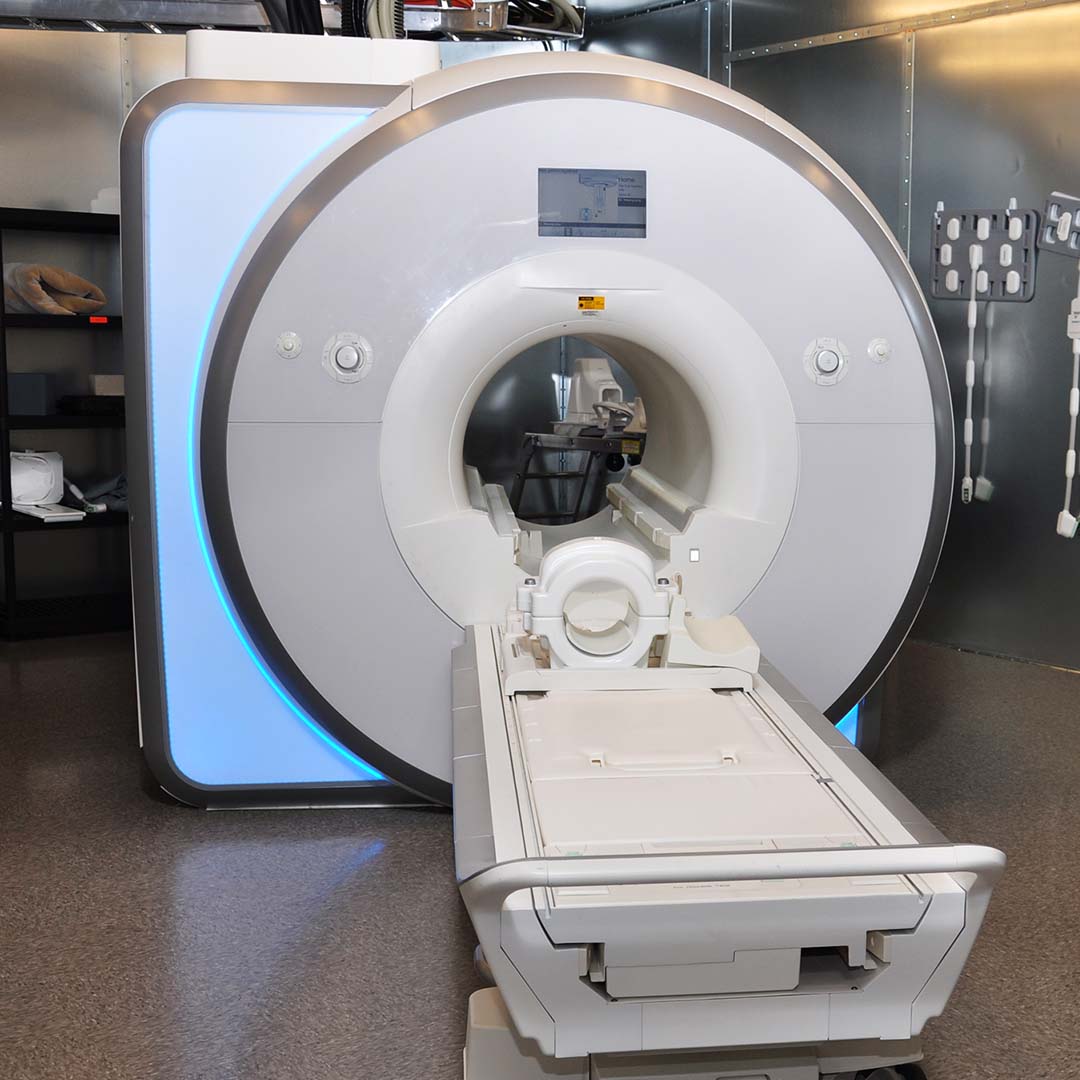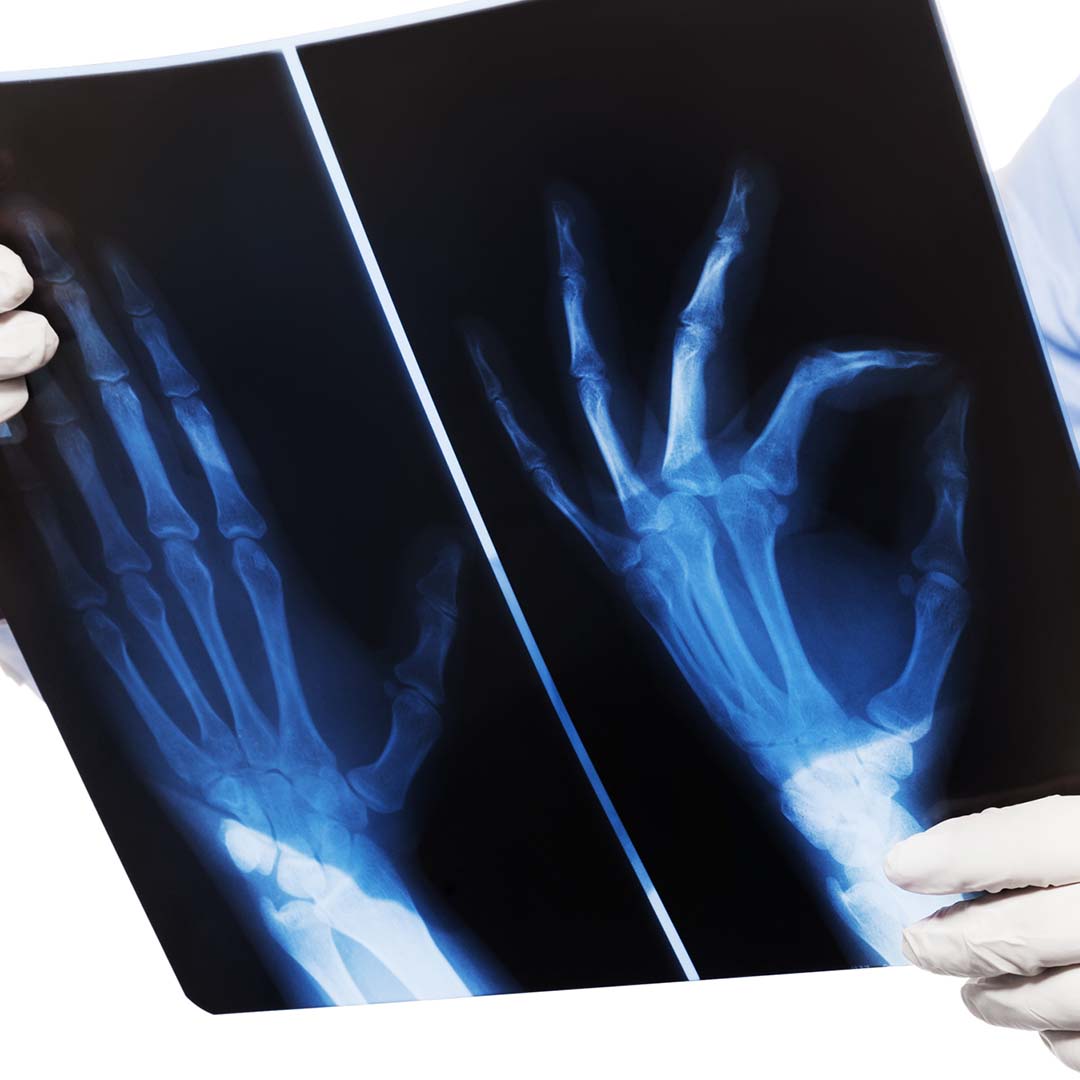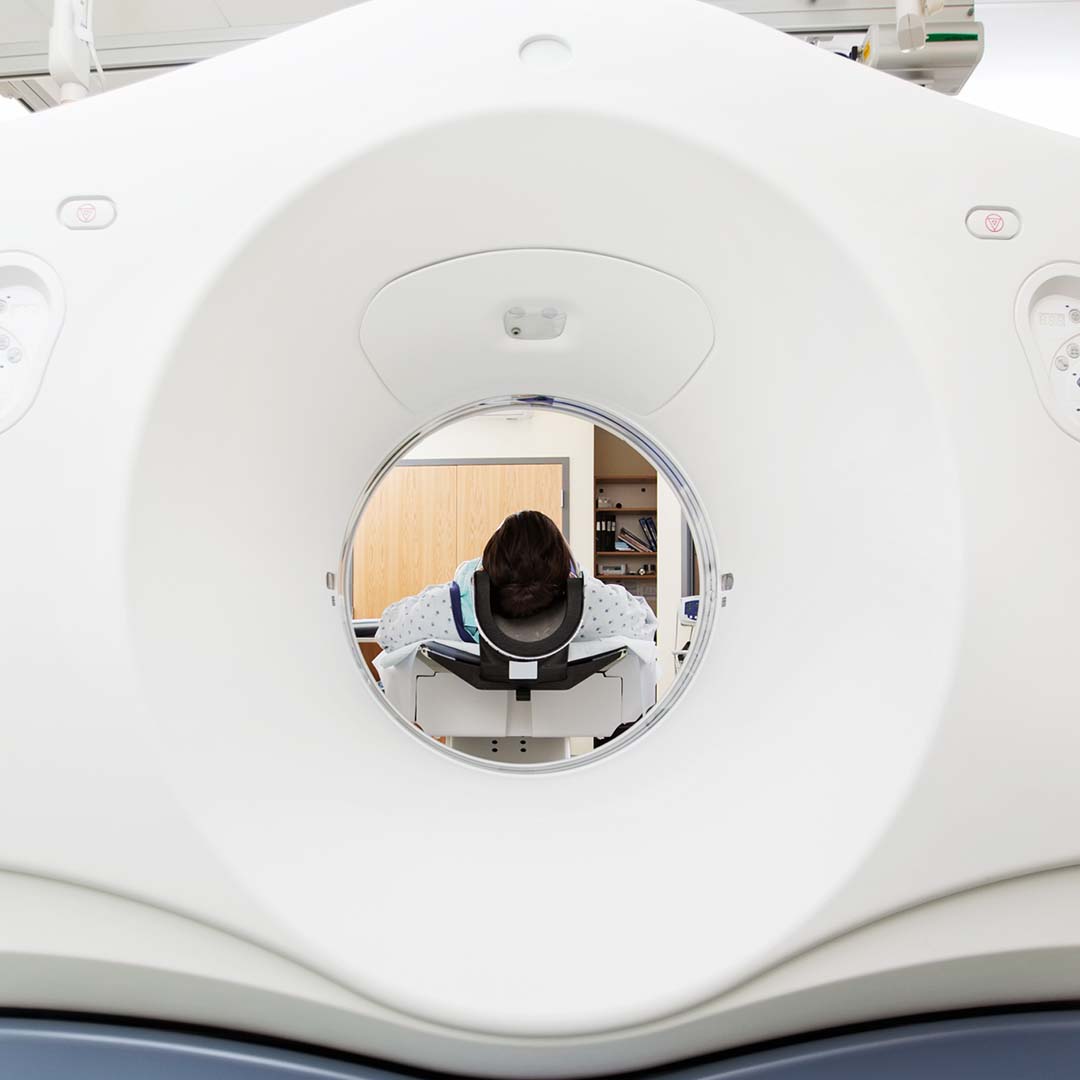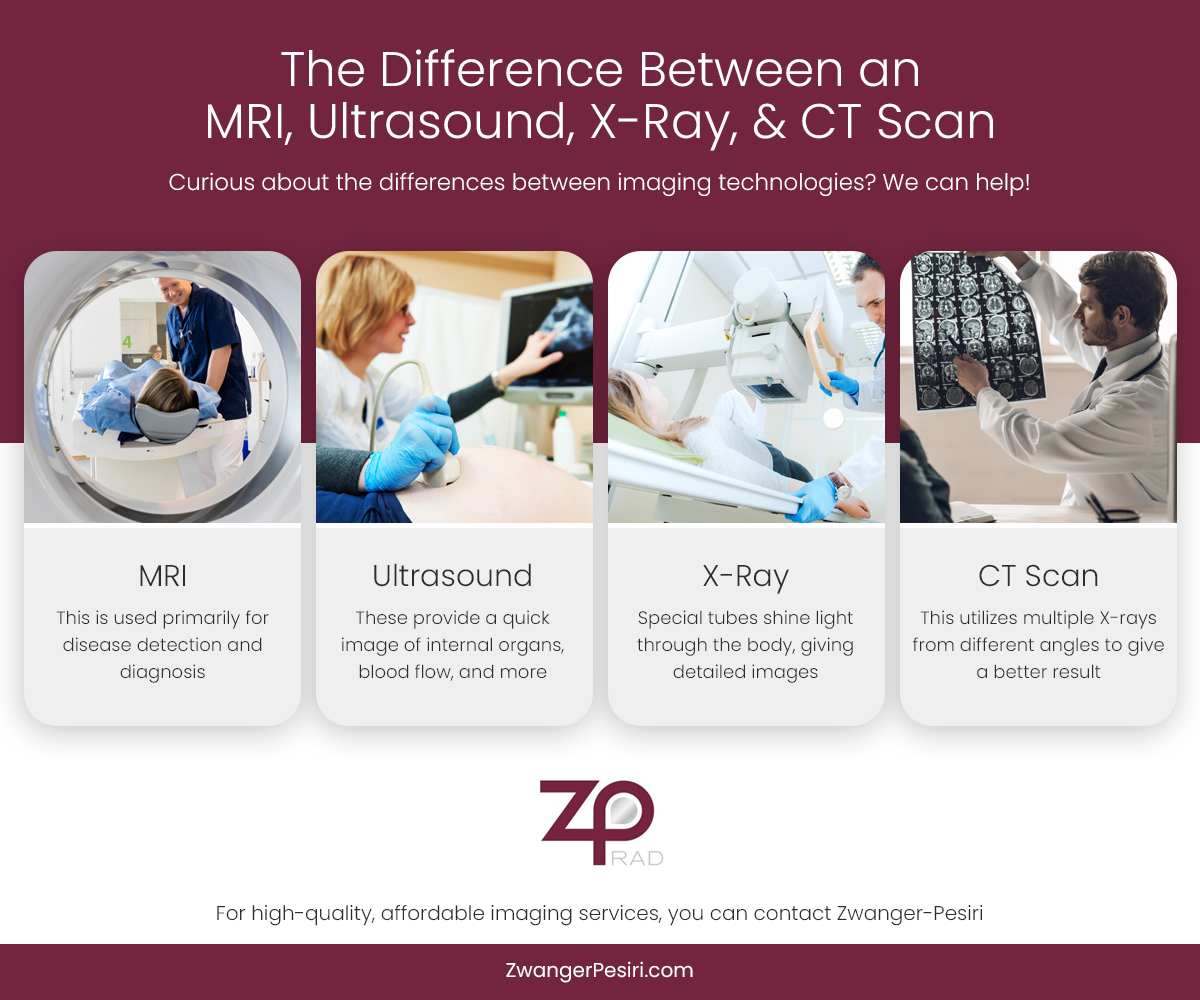When you need imaging services, the terminology and procedures can often get muddled and confused. We often get questions about the differences between MRI, ultrasound, X-ray, and CT scans, so we are here to try and help ease some of the confusion. At Zwanger-Pesiri, our team of specialized radiologists will help to give you the tests and results you need. Learn more from our team today!

MRI
MRI is a non-invasive imaging technology. It gives three-dimensional anatomical images without using radiation. This type of scan and machine is normally used for disease diagnosis and detection. The technology excites and detects the change in direction or the rotational axis of protons in the water that makes up living tissues.
Ultrasound
Ultrasounds, often called sonograms, are another form of imaging. This non-invasive process allows for quick visualization of interior organs and structure. There are also ultrasounds that are utilized to visualize blood flow through the blood vessels and arteries. The main types of ultrasounds that are offered by Zwanger-Pesiri include:
- Breast ultrasound
- Ob/Gyn ultrasound
- Doppler ultrasound
- Echocardiography
- Musculoskeletal ultrasound


X-Ray
In an X-ray, beams are produced by special X-ray tubes, which are similar to supercharged light bulbs. The beams get sent through the body and are received by digital sensor plates. Because different parts of the body absorb the X-rays differently, it makes it easy to differentiate between bones and skin or muscle tissue. X-rays are most commonly used to look at bone health or breakages, but can be used for other needs as well.
CT Scan
CT scans are similar to X-rays, but they utilize images taken from multiple angles as a patient is moved. This will provide images that show details of bones, soft tissue, organs, and blood vessels. CT scan images are much more detailed than traditional X-rays. Many CT scans use a contrast dye that can be given for the patient to drink or injected through an IV. This helps to highlight certain parts of the body and sharpen images.


If you need imaging services for any reason, you can always count on the team at Zwanger-Pesiri! Contact us today to learn more about our imaging services and to schedule an appointment.